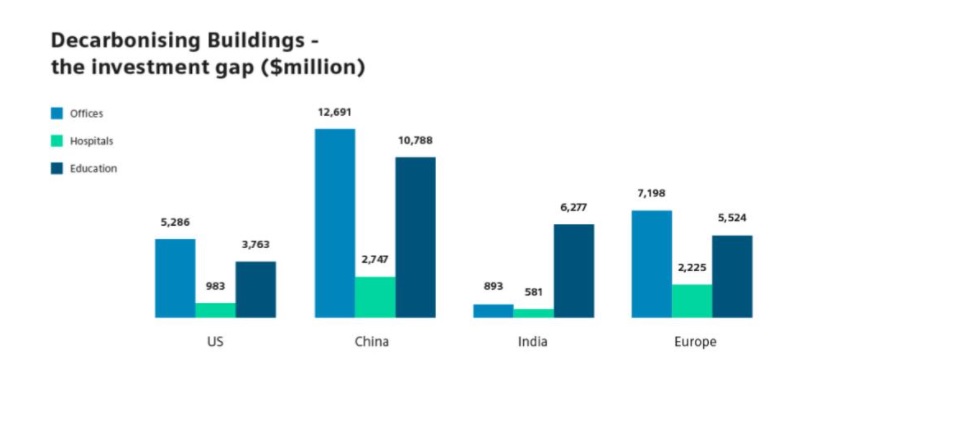More than £1.6billion will need to be invested in hospitals if they are to meet tough carbon reduction targets, new research has revealed.
The findings of a probe by Siemens Financial Services (SFS) estimate that the investment gap between current finance levels in energy-efficient renovation of buildings stock, and those needed to achieve decarbonisation targets across Europe, is around $2.2billion, or £1.6billion.
Although the investment needed in hospitals is lower than in both the education and office sectors, it shows the level of work still required to meet the targets, which in the UK commit to the health service reaching ‘net zero’ carbon levels by 2040.
Not only can smarter building stock better cope with this change; it will contribute significantly to a cleaner and greener future
And, according to the report, smart financing will help to bridge the gap and encourage greater levels of investment in a financially-sustainable way.
The report, entitled Financing Decarbonization: Smart Buildings, focuses on buildings – which account for 36% of final energy use – as a prime target for energy efficiency initiatives, and a major potential contributor to climate target attainment.
The research finds that smart buildings – which incorporate hot-desking, health and safety, information access controls, security, infection mitigation, and more – are best suited to ensure more-efficient use of commercial and public buildings, significantly-reduced energy usage and emissions, and the transformation of buildings into far-more-sustainable assets for society.
In order to bridge the gap between current investment levels and the required volumes, smart financing methods are being offered by private sector finance.
These solutions seek to make the conversion to decarbonised, energy-efficient, smart buildings affordable for owners.

The research explored the cost of energy efficiency renovation of existing buildings across the hospital, office, and education sectors across four regions - Europe, China, India, and the US
Financing tools can ease cash flow and align costs to the rate of benefits gained.
Smart financing also has the potential to make the transition to decarbonisation budget neutral by harnessing future savings to pay for current investment.
“Our use of buildings has been disrupted and altered by the pandemic,” said Jo Harris, sales director for commercial finance UK at Siemens Financial Services.
“Not only can smarter building stock better cope with this change; it will contribute significantly to a cleaner and greener future.
“Smart financing solutions can accelerate the rate of transformation, helping buildings owners to achieve net-zero carbon building stock.”
Methodology
Proprietary data from Siemens Financial Services on the cost of energy efficiency renovation per sq m in existing buildings was applied to the total sq m of the hospital for each country/region studied.
The total cost of energy efficiency renovation was then calculated based on the Global Alliance for Building and Construction’s estimate of the percentage of building stock that would have to be converted by 2040 to meet current climate targets; rising to 2% by 2030 and 3% by 2040.
Then, the cumulative percentage of actual current renovation rates – approximately 1% of existing building stock – was projected to 2040 and the cost of renovation calculated at those current rates.
The investment gap is the difference between current energy efficiency renovation rates and the projected rate of renovation needed to meet climate targets.
